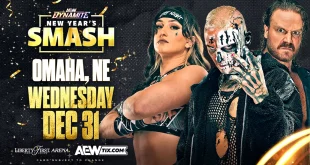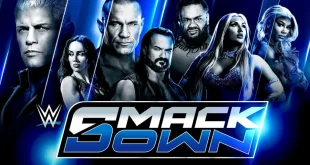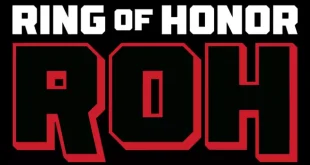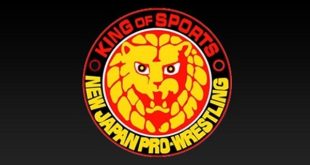The Evaluation of Wrestling
Introduction to Wrestling
Wrestling is an exciting source of entertainment for some audience yet a thrilling sport for others. It has ruled the hearts for many generations. It has always been about skill, strength and sportsmanship.
Imagine two wrestlers fighting in a ring, each trying to beat the other with his power, holds, flips and expert techniques. It entertains the viewers more than any other game.
In the beginning, wrestling was known to be a simple sport. Over time, it got evaluated with many characters and storylines. In the meantime, wrestlers travelled from town to town for performing in front of excited audience.
Now a days, wrestling has gained popularity world-wide. There are many wrestling styles being used in the world. Whether it's the high-flying acrobatics of lucha libre from Mexico, the intense and hard-hitting puroresu from Japan, or the entertainment-focused style of WWE in the United States, there's something for every fan to enjoy.
The evaluation of wrestling is a great journey. We can see how this amazing sport has grown and adapted the modern techniques by looking at how Watch Wrestling styles have changed over times.
The Early Origins of Wrestling
Wrestling is one of the oldest sports in the world, with a history spanning hundreds of years. In this blog post, we'll explore the different stages of wrestling's development.
Ancient Wrestling
Greece:
In ancient Greece, wrestling held a prominent place in the Olympic Games, which began in 776 BC. Greek wrestlers competed without clothing, using oil to make it harder for opponents to grip them. Beyond being a sport, wrestling served as training for soldiers, enhancing their combat skills. Greek wrestlers emphasized strength and technique, employing moves like grappling and pinning opponents to the ground.
Rome
The Romans adopted many wrestling techniques from the Greeks but added their own twists. Wrestling was a popular pastime and entertainment at public events. Roman wrestlers, known as "pugilists," competed in arenas and often participated in grand spectacles. Unlike the Greeks, Roman wrestlers wore loincloths, and their matches could be more intense, sometimes resulting in serious injuries.
Egypt:
In ancient Egypt, wrestling also thrived as a sport. Tomb paintings from over 4,000 years ago depict wrestlers in action, using holds and throws similar to those seen in modern wrestling. Wrestling symbolized physical prowess and held cultural significance, evident in art and carvings.
Catch Wrestling
Origins: Catch-as-catch-can wrestling, also known as catch wrestling, emerged in the 19th century in the United Kingdom and quickly spread to the United States. This style of wrestling gained popularity at fairs and carnivals, where wrestlers would challenge spectators to matches. The term “catch-as-catch-can” means “catch me if you can,” emphasizing the sport’s fast-paced and adaptable nature.
Techniques: Catch wrestling is famous for its combination of submission holds and powerful throws. Unlike some traditional styles that restrict certain holds, catch wrestling allows almost any hold or lock to force an opponent to submit. Wrestlers aim to catch their opponents in a hold they can’t escape, using moves like joint locks, chokeholds, and pins.
Amateur Wrestling
Greco-Roman Wrestling: In the modern Olympic era, which began in the late 19th century, Greco-Roman wrestling became one of the first standardized forms of amateur wrestling. In Greco-Roman wrestling, athletes can only use their arms and upper bodies for attacking and defending. Moves like leg holds and trips are not allowed. This style focuses on throwing and lifting opponents, showcasing strength and technique.
Freestyle Wrestling:
Freestyle wrestling is another major style in amateur wrestling, also featured in the Olympics. Unlike Greco-Roman, freestyle wrestling permits athletes to use their entire bodies, including their legs, to take down and pin opponents. This style is dynamic and fast-paced.
The Golden Age of Professional Wrestling (1940s-1950s)
The 1940s and 1950s marked an exciting period for wrestling, often referred to as the “Golden Age.” During this time, wrestling transitioned from small carnival shows to larger, organized events that attracted massive crowds and gained immense popularity.
The Birth of Professional Wrestling
In the early days, wrestling matches were part of carnival sideshows. Wrestlers would challenge audience members to try and defeat them. These matches were usually brief and aimed at entertaining the crowd. However, as wrestling’s popularity grew, it evolved into a more structured sport.
By the 1940s, wrestling had become a major attraction in large arenas and on television. Promoters organized regular events, weaving storylines and rivalries that kept fans coming back for more. Matches became longer, more dramatic, and showcased a blend of athleticism and showmanship. This era marked the birth of professional wrestling as we recognize it today.
Prominent Styles
During this golden age, wrestling styles were heavily influenced by catch wrestling—a form that emphasized submission holds and grappling. Wrestlers used techniques to control opponents with powerful holds and locks. Matches were intense and technical, highlighting wrestlers’ skills and strength.
Submission holds, where a wrestler forces their opponent to give up by applying a painful hold, were particularly popular. These moves added excitement and unpredictability, as a wrestler could win at any moment by making their opponent submit.
Key Figures
Two of the most renowned wrestlers from this era were Lou Thesz and George Hackenschmidt.
Lou Thesz: Lou Thesz, considered one of the greatest wrestlers of all time, was known for his technical prowess and innovative moves. Thesz held the world championship multiple times and introduced enduring techniques like the powerbomb and the Lou Thesz press. His mastery of submission holds allowed him to out-wrestle nearly anyone.
George Hackenschmidt: George Hackenschmidt, nicknamed “The Russian Lion,” left a lasting legacy in wrestling. His incredible strength, combined with a background in weightlifting, gave him an advantage in the ring. Hackenschmidt was famous for his powerful bear hug and other submission holds. As a major star in the early 1900s, he played a pivotal role in shaping professional wrestling’s popularity.
The Territory Era (1950s-1980s)
During the Territory Era, wrestling was organized into regional promotions, each with its unique style and stars. These territories were like small kingdoms, where promoters held shows in specific areas and built local fanbases. Wrestlers often traveled from one territory to another, bringing their styles and techniques along. This system allowed wrestling to thrive across the country, as each region developed its own flavor of wrestling that appealed to local fans.
The diversity of wrestling styles in different territories made the sport incredibly exciting. In the South, wrestling was known for its brawling style, featuring intense, hard-hitting matches that sometimes spilled out of the ring. In the Midwest, technical wrestling was more popular, with wrestlers focusing on holds and counter-holds. Meanwhile, in Mexico, lucha libre became a sensation, showcasing high-flying acrobatics and masked wrestlers. Promotions like the National Wrestling Alliance (NWA) and the American Wrestling Association (AWA) played crucial roles during this era, with legendary wrestlers like Harley Race and Ric Flair rising to stardom. Each territory had its own heroes and villains, weaving a rich tapestry of wrestling that captivated fans everywhere.
The Rock ‘n’ Wrestling Connection (1980s)
In the 1980s, wrestling went through a big change thanks to the World Wrestling Federation (WWF), now known as WWE. Led by Vince McMahon, the WWF expanded across the country and became a household name, especially because of national TV exposure. This period, called the Rock ‘n’ Wrestling Connection, mixed wrestling with popular culture, including music, to reach a wider audience. Wrestling shows were on major TV networks, making the sport more accessible than ever. This national growth turned wrestling into mainstream entertainment, attracting millions of new fans.
During the Rock ‘n’ Wrestling era, larger-than-life characters and dramatic storylines grabbed people’s attention. Wrestlers weren’t just athletes; they were colorful personalities with unique catchphrases. Matches became more about entertainment and storytelling than technical skills. In the ring, there were big, exciting moves and dramatic moments designed to thrill the audience. Some key figures from this time include Hulk Hogan (known for his heroic persona and “Hulkamania” catchphrase), Randy Savage (famous for his flamboyant style and intensity), and Roddy Piper (a charismatic and unpredictable villain). These stars turned wrestling into a global phenomenon during the 1980s.
The Attitude Era (1990s)
In the 1990s, wrestling took a bold turn during the Attitude Era. This period appealed to older audiences with edgier content. Wrestling storylines became more adult-oriented, featuring controversial themes, intense rivalries, and rebellious characters. These changes made the shows more exciting and unpredictable, drawing in millions of viewers.
The WWF (now WWE) pushed boundaries with wild storylines and shocking moments, turning wrestling into must-see TV. Iconic characters like Stone Cold Steve Austin and The Rock became cultural legends, known for their defiance and charisma.
Inside the ring, the Attitude Era saw a rise in hardcore wrestling. Matches featured more physicality and dangerous stunts. Wrestlers performed high-risk maneuvers and used weapons like chairs and tables to create thrilling, often brutal encounters. This era was marked by intense competition between the WWF and its rival, World Championship Wrestling (WCW), leading to the “Monday Night Wars.” Extreme Championship Wrestling (ECW) also left a significant impact, introducing a grittier, more hardcore style that influenced the mainstream. Key figures like Stone Cold Steve Austin (with his anti-authority attitude), The Rock (with electrifying charisma), and Mick Foley (known for fearless and extreme matches) defined this era, making it one of the most popular periods in wrestling history.
Wrestling from Around the World
Wrestling has become really popular all over the world. People from different countries have brought their own special styles to the ring.
Wrestlers from Japan are known for being tough and doing strong moves. In Mexico, wrestlers do amazing flips and jumps and wear cool masks. And wrestlers from England are good at using skills and strong hits. These different styles have made wrestling more exciting with lots of new and fun things to watch.
There are also new wrestling groups that are showing people different kinds of wrestling. These groups let wrestlers try new things and be creative. They have wrestlers from many different places, and they do cool and different matches.
Today, wrestlers are mixing moves from all over the world to make their own special styles. Some famous wrestlers have helped make these new styles really popular. Wrestling is now more interesting than ever because there are so many different things to see.
Modern Wrestling: The Current Landscape
In today’s wrestling scene, technology has played a huge role. Social media and streaming services have made wrestling more accessible and popular than ever. Fans can watch matches from all over the world on platforms like YouTube, Twitch, and dedicated wrestling networks. Wrestlers also connect with fans directly through social media, sharing updates, behind-the-scenes content, and engaging in online storylines.
This digital revolution has allowed different wrestling styles from various countries to reach a global audience. Fans now enjoy a diverse range of matches and promotions. Let’s explore some key aspects:
Promotions:
WWE (World Wrestling Entertainment): Known for its polished, entertainment-focused approach. Elaborate storylines and larger-than-life characters are WWE’s trademarks.
AEW (All Elite Wrestling): Emphasizes in-ring action and often blends traditional and innovative wrestling styles.
Women’s Wrestling:
Female wrestlers now take the spotlight and deliver main-event performances.
Key Trends:
- Increased athleticism.
- Strong storytelling.
- Greater fan engagement.
Notable Stars:
- Becky Lynch: Charismatic and groundbreaking.
- Seth Rollins: Versatile and high-energy.
- Jon Moxley: Gritty and intense.
Throughout its history, wrestling has changed from ancient civilizations' sports competitions to today's global entertainment phenomenon. The sport's styles have transformed a lot, influenced by different cultures and traditions. From the skilful Greco-Roman wrestling to the exciting lucha libre and the showmanship of modern promotions like WWE and AEW, wrestling styles keep captivating audiences worldwide.
Looking back, wrestling's evolution has been shaped by its rich heritage. Techniques and storytelling methods from the past still matter in today's matches, showing how traditions are respected while new ideas move the sport forward. Looking ahead, trends suggest a focus on athleticism, compelling stories, and blending global styles. With advancing technology and wider reach of promotions, wrestling is set to attract an even bigger audience.
Embracing diverse wrestling styles not only enriches the sport but also celebrates its global appeal. Each style brings something special to the ring, giving fans different experiences to enjoy. Whether it's the skill of Japanese wrestling, the drama of American promotions, or the high-energy action of Mexican lucha libre, these styles add to wrestling's colorful history. As the sport keeps changing, embracing this diversity will ensure its growth and relevance in the world of sports and entertainment.
 Watch Wrestling Watch Wrestling | Watch WWE, AEW, AEW Dynamite, RAW, SmackDown, PPV, NXT, Rampage, Collision, Main Event, UFC, Indy
Watch Wrestling Watch Wrestling | Watch WWE, AEW, AEW Dynamite, RAW, SmackDown, PPV, NXT, Rampage, Collision, Main Event, UFC, Indy











